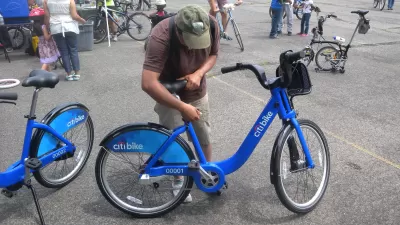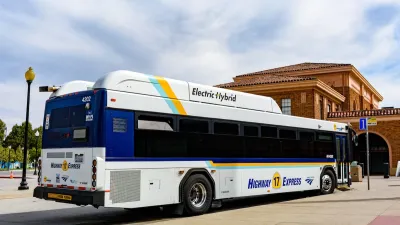Online reviews aren't representative of overall neighborhood populations, but they can reveal data that otherwise might go unnoticed during research phases of planning processes.

Charlotte Hsu shares new research that makes the case for allowing space for online reviews in planning processes.
Every day, people share a dizzying amount of information about local communities online. They talk about whether their neighbors are friendly, how well the buses run, what kinds of restaurants are in an area, and much, much more.
A new study by University at Buffalo researcher Yingjie Hu shows how we can sort through this vast trove of digital data to improve cities and people's quality of life.
The study, published by the Annals of the American Association of Geographers, posts on the site Niche.com to search for insights about public opinion.
"The goal was to efficiently sort through thousands of opinions to learn about people's perceptions of their communities," explains Hsu. "The study combined spatial analysis, machine learning and natural language processing techniques to identify features of neighborhoods that people talked about online, and what reviewers' general feelings were about those attributes."
So, can online reviews help planners spot insights into public opinion they might otherwise miss? According to researchers, data harvesting can complement traditional methods of public engagement and research.
FULL STORY: How online neighborhood reviews could aid urban planning

Study: Maui’s Plan to Convert Vacation Rentals to Long-Term Housing Could Cause Nearly $1 Billion Economic Loss
The plan would reduce visitor accommodation by 25,% resulting in 1,900 jobs lost.

North Texas Transit Leaders Tout Benefits of TOD for Growing Region
At a summit focused on transit-oriented development, policymakers discussed how North Texas’ expanded light rail system can serve as a tool for economic growth.

Why Should We Subsidize Public Transportation?
Many public transit agencies face financial stress due to rising costs, declining fare revenue, and declining subsidies. Transit advocates must provide a strong business case for increasing public transit funding.

How to Make US Trains Faster
Changes to boarding platforms and a switch to electric trains could improve U.S. passenger rail service without the added cost of high-speed rail.

Columbia’s Revitalized ‘Loop’ Is a Hub for Local Entrepreneurs
A focus on small businesses is helping a commercial corridor in Columbia, Missouri thrive.

Invasive Insect Threatens Minnesota’s Ash Forests
The Emerald Ash Borer is a rapidly spreading invasive pest threatening Minnesota’s ash trees, and homeowners are encouraged to plant diverse replacement species, avoid moving ash firewood, and monitor for signs of infestation.
Urban Design for Planners 1: Software Tools
This six-course series explores essential urban design concepts using open source software and equips planners with the tools they need to participate fully in the urban design process.
Planning for Universal Design
Learn the tools for implementing Universal Design in planning regulations.
Ascent Environmental
Borough of Carlisle
Institute for Housing and Urban Development Studies (IHS)
City of Grandview
Harvard GSD Executive Education
Toledo-Lucas County Plan Commissions
Salt Lake City
NYU Wagner Graduate School of Public Service





























